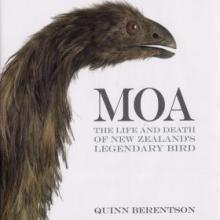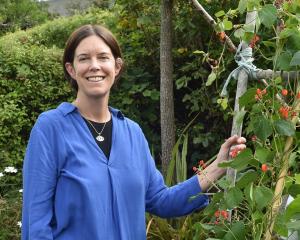
Moa and humans certainly co-existed. It was just 8km south of Oamaru that Walter Mantell, travelling from Oamaru to incipient Dunedin in 1852, first found and excavated a moa-hunter camp beside what is now known as the Awamoa stream. As recently as 2005, not far away, a hangi pit excavated by Jill Hamel contained rotting moa material.
Quinn Berentson skilfully interweaves the threads of history, for instance to describe colourfully how Hartley and Riley's discovery of gold in the Cromwell George, winning 40kg by hand in 1862, opened a fortuitous new dimension to the moa story.
Nothing was allowed to hinder the grim determination of the swarming gold-rushers to create access to the fabulous new deposits, and in remote Central Otago, the Interior of Otago as it was called, moa bones were noticed in profusion. Enormous quantities had been discarded by ancestral hunters, some at rigorous altitudes of up to 5000 feet (1500m).
Were moa extinguished directly as a consequence of their food value? This is debatable and the link may be indirect. Extinction depends on a summation of numerous factors impinging on the ability of a species to adapt to environmental change, to defeat predators (in this case humans, apart from Haast's eagle), to breed fast enough, and many other pressures.
In the light of relatively recent research, Berentson discusses how early Polynesian settlers of the 13th century may have attempted to clear bush by controlled burning, but lost control. A technique they understood well in the context of small, lush islands was not appropriate to our much larger, drier tracts of land. The habitat was changed, forest was replaced with fern and bush. Simultaneously hunted and deprived of their habitat, the moa as a species soon had no refuge.
In fact, moa were more than a single species, or genus even. The definition of a species or senior genus can be a moving target, especially with skeletons alone to work with. Size became a key criterion and everyone's favourite, the giant moa, with legs as tall as a human, was placed in the genus Dinornis (a word not unrelated to dinosaur). Some were much smaller. Moa are distinct from the kiwi and other flightless birds in having no vestige of wing bones represented in the skeleton.
After decades of reclassification, modern DNA sequencing came to the rescue. Bones, particularly if deposited in a cool, dark cave, can preserve DNA comparatively well. The findings were dramatic: bird size had been a serious confounder. DNA proved that many moa species had much larger females than the males, which had previously been classified as separate species. We now have a mere nine species, belonging to six genera.
Quinn Berentson's book is extremely well produced, comprehensively researched and profusely illustrated with top-quality photographs and historic images. For every reader's level of interest in moa, from expert to newcomer, it is a fine work of reference, with detailed literature sources and leads to wider reading. For the Otago reader there's plenty about local discoveries. An excellent way to redeem that Christmas book token.
Clive Trotman is a Dunedin arbitrator and science presenter











